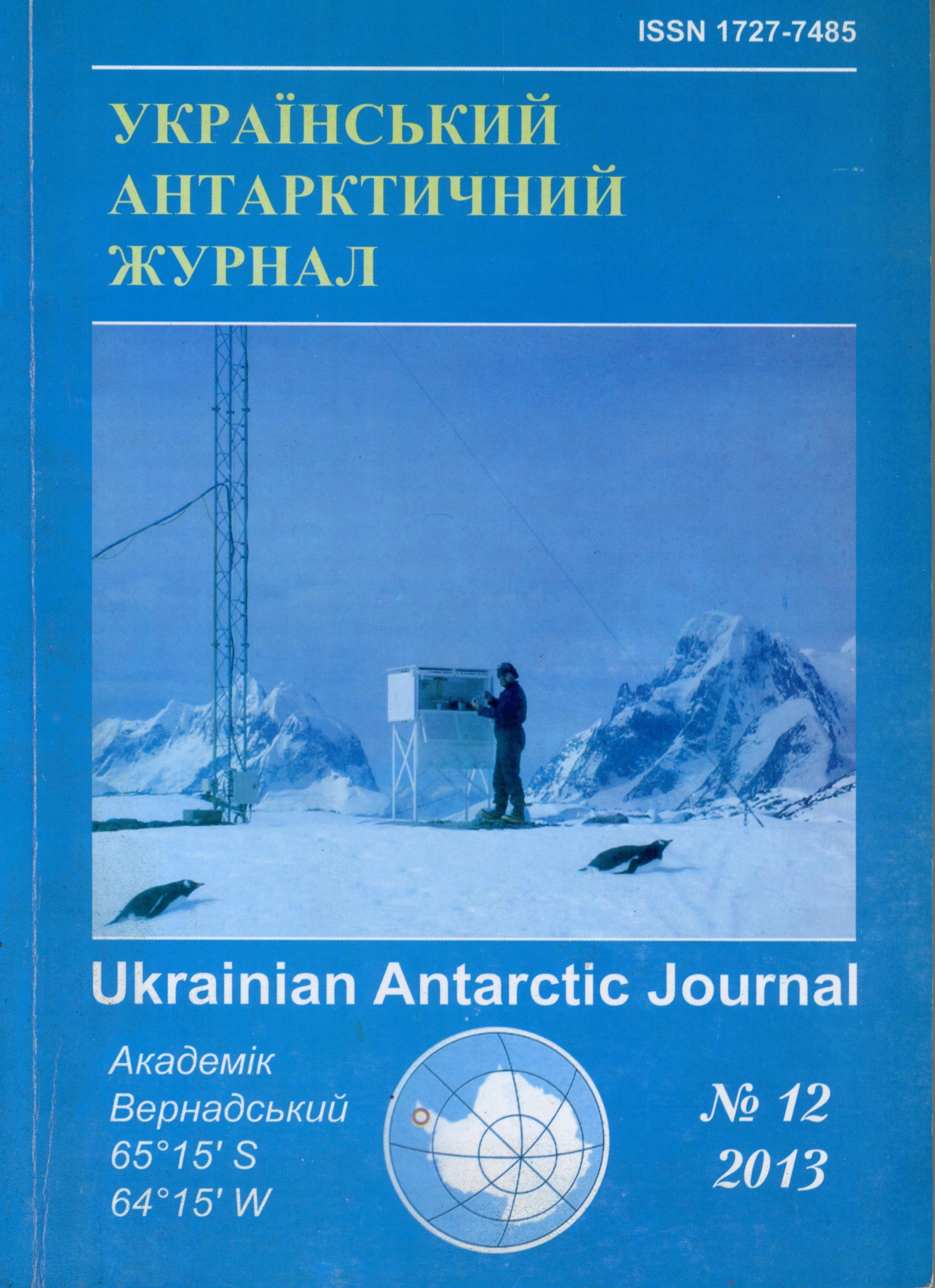Diagnostic of the global lightning activity based on the data of long-term monitoring of the Schumann resonance signals at UAS Akademician Vernadsky
- Schumann Resonance,
- Solar cycle,
- ionosphere,
- magnetosphere,
- thunderstorm
Abstract
Regular observations of ELF (3-300 Hz) electromagnetic fields at the Ukrainian Antarctic Station (UAS) were carried out since 2002. The main objective of ELF waveband monitoring observations is studying of natural resonators of the Earth and primarily Schumann resonator (SR). This information may be helpful for diagnosis of global climate changes, because the intensity of the SR signals contains information about a global lightning activity and changes therein, associated with the global warming effect. We make spectral and polarization processing of SR signals. For the moment we have processed and analyzed data for ten years period. To estimate the activities of world thunderstorm centers by processing the SR signals we use the theoretical model based on our asymptotic theory of Schumann resonance fields in the gyrotropic Earth-ionosphere cavity. The results of data processing confirmed that world thunderstorm centers drifts across the equator to the northwest in summer and to the southeast in the winter as it is mentioned in the literature. Also, we have discovered long-term trends in both the intensity of SR signals and peak-frequencies of first SR maximum. This long-term variation is in phase with changes of solar activity indexes. Additionally we have processed publicly available data sets contained information about the number of lightning in the equatorial zone, observed by Lightning Imaging Sensor (LIS) spacecraft for the same period of time. This data demonstrate no noticeable eleven-year trend of the number of lightning in the equatorial zone. Thus, the analysis of the observational data shows that it is necessary to improved theoretical model which we use to calculate activities of the world thunderstorm centers. In particular, it is necessary to take into consideration long-term (with solar activity cycle timescale) changes of the impedance of lower ionosphere, as well as to take into account seasonal drift of world thunderstorm centers across the equator. In the future we hope to improve significantly the accuracy of reconstruction of the world thunderstorm activity accounting these two factors in theoretical model.
References
- Afrajmovich, E`.L., Astaf`eva, E`.I. et al. (2008). Global`noe e`lektronnoe soderzhanie v 23-m cikle solnechnoj aktivnosti [Global electron content in the 23rd cycle of Sun activity]. Geomagnetizm i ae`ronomiya, 48(2), 195–208.
- Bezrodny`j, V.G. (2004). Asimptoticheskaya teoriya polej shumanovskix rezonansov v girotropnoj polosti Zemlya–ionosfera [Asymptotical theory of the Schumann resonances fields in the gyrotropic cavity Earth-Ionosphere]. Radiofizika i Radioastronomiya, 9(4), 375–390.
- Bliox, P.V., Nikolaenko, A.P., & Filippov, Yu.F. (1977). Global`ny`e e`lektromagnitny`e rezonansy` v polosti Zemlya–ionosfera [Global electromagnetic resonsnces in the cavity Earth-Ionosphere]. Kyiv, Naukova Dumka.
- Vitinskij, Yu.I., Kopeczkij, M., & Kuklin, G.V. (1986). Statistika pyatnoobrazovatel`noj deyatel`nosti Solncza [The statistics of spot-forming activity of the Sun]. Moscow, Nauka.
- Koloskov, A.V., Bezrodny`j, V.G., Budanov, O.V. et al. (2005). Polyarizacionny`j monitoring shumanovskix rezonansov v Antarktike i vosstanovlenie xarakteristik mirovoj grozovoj aktivnosti [Polarization monitoringof the Schumann resonances in Antarctia and recovering the parameters of the world lightning activity]. Radiofizika i Radioastronomiya, 10(1), 11–29.
- Soroka, S. (2003). Induktsiinyi mahnitometr LEMI-112A3. Tekhnichnyi opys ta instruktsiia po ekspluatatsii AShU2.741.035TO [Induction magnetometer LEMI-112A3. A technical description and instruction for AShU2.741.035TO].
- Soroka, S. (2003). Induktsiinyi ramkovyi mahnitometr LEMI-112A3P. Tekhnichnyi opys ta instruktsiia po ekspluatatsii AShU2.709.000 TO [ [Induction magnetometer LEMI-112A3P. A technical description and instruction for AShU2.709.000 TO].
- Bezrodny, V.G. (2007). Magnetic polarization of the Schumann resonances: An asymptotic theory. Journal of Atmospheric and Solar-Terrestrial Physics, 69(9), 995–1008.
- Ondraskova, A., Sevcik, S., & Kostecky, P. (2009). A significant decrease of the fundamental Schumann resonance frequency during the solar cycle minimum of 2008-9 as observed at Modra Observatory. Contributions to Geophysics and Geodesy, 39/4, 345–354.
- Popoff, I.G., Whitten, R.C., & Edmonds, R.S. (1964). The role of nonflare X-radiation in the D region. Journal of Geophysical Research, 69, 4081–4085.
- Satori, G., Williams, E., & Mushtak, V. (2005). Response of the Earth–ionosphere cavity resonator to the 11-year solar cycle in X-radiation. Journal of Atmospheric and Solar-Terrestrial Physics, 67(6), 553–562.
- Williams, E. (1992). The Schumann Resonance: A Global Tropical Thermometer. Science, 256(5060), 1184–1187.

